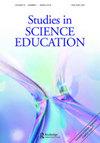Promoting science and technology in primary education: a review of integrated curricula
IF 9.9
2区 教育学
Q1 EDUCATION & EDUCATIONAL RESEARCH
引用次数: 72
Abstract
Integrated curricula seem promising for the increase of attention on science and technology in primary education. A clear picture of the advantages and disadvantages of integration efforts could help curriculum innovation. This review has focused on integrated curricula in primary education from 1994 to 2011. The integrated curricula were categorised according to a taxonomy of integration types synthesised from the literature. The characteristics that we deemed important were related to learning outcomes and success/fail factors. A focus group was formed to facilitate the process of analysis and to test tentative conclusions. We concluded that the levels in our taxonomy were linked to (a) student knowledge and skills, the enthusiasm generated among students and teachers, and the teacher commitment that was generated; and (b) the teacher commitment needed, the duration of the innovation effort, the volume and comprehensiveness of required teacher professional development, the necessary teacher support and the effort needed to overcome tensions with standard curricula. Almost all projects were effective in increasing the time spent on science at school. Our model resolves Czerniac’s definition problem of integrating curricula in a productive manner, and it forms a practical basis for decision-making by making clear what is needed and what output can be expected when plans are being formulated to implement integrated education.促进初等教育中的科学和技术:综合课程审查
综合课程似乎有希望在初等教育中增加对科学和技术的重视。清晰地了解整合的利弊有助于课程创新。本综述的重点是1994年至2011年小学教育的综合课程。综合课程根据综合类型的分类从文献中进行了分类。我们认为重要的特征与学习成果和成功/失败因素有关。成立了一个焦点小组,以促进分析过程和检验初步结论。我们的结论是,我们的分类水平与(a)学生的知识和技能,学生和教师之间产生的热情,以及教师所产生的承诺;(b)所需的教师承诺、创新努力的持续时间、所需教师专业发展的数量和全面性、必要的教师支持以及克服与标准课程的紧张关系所需的努力。几乎所有的项目都有效地增加了学校花在科学上的时间。我们的模型以一种富有成效的方式解决了zerniac关于整合课程的定义问题,并通过明确制定实施整合教育的计划时需要什么和期望产出什么,形成了决策的实践基础。
本文章由计算机程序翻译,如有差异,请以英文原文为准。
求助全文
约1分钟内获得全文
求助全文
来源期刊

Studies in Science Education
EDUCATION, SCIENTIFIC DISCIPLINES-
CiteScore
15.30
自引率
2.00%
发文量
7
审稿时长
>12 weeks
期刊介绍:
The central aim of Studies in Science Education is to publish review articles of the highest quality which provide analytical syntheses of research into key topics and issues in science education. In addressing this aim, the Editor and Editorial Advisory Board, are guided by a commitment to:
maintaining and developing the highest standards of scholarship associated with the journal;
publishing articles from as wide a range of authors as possible, in relation both to professional background and country of origin;
publishing articles which serve both to consolidate and reflect upon existing fields of study and to promote new areas for research activity.
Studies in Science Education will be of interest to all those involved in science education including: science education researchers, doctoral and masters students; science teachers at elementary, high school and university levels; science education policy makers; science education curriculum developers and text book writers.
Articles featured in Studies in Science Education have been made available either following invitation from the Editor or through potential contributors offering pieces. Given the substantial nature of the review articles, the Editor is willing to give informal feedback on the suitability of proposals though all contributions, whether invited or not, are subject to full peer review. A limited number of books of special interest and concern to those involved in science education are normally reviewed in each volume.
 求助内容:
求助内容: 应助结果提醒方式:
应助结果提醒方式:


